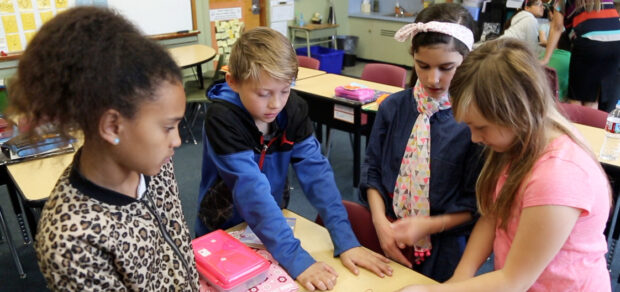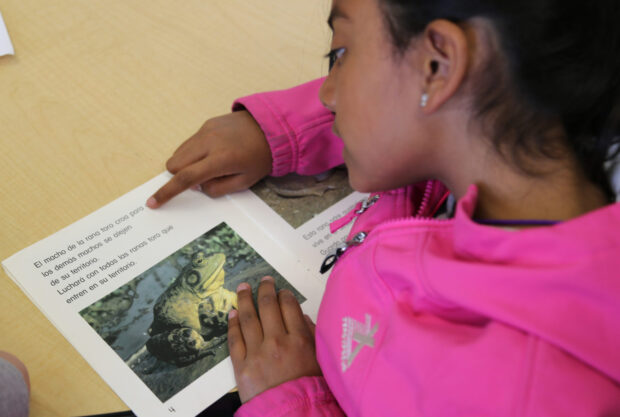Iliana Sandoval is teaching her fourth-graders a science lesson about electric current flow. All the posters on the walls of her classroom are in Spanish and Sandoval is speaking in Español.
“English is not spoken in my classroom,” Sandoval said.
Sandoval’s students are part of the growing English-Spanish immersion program at the Boise School District’s Whittier Elementary School. Dual-language programs are taught simultaneously in two languages and are popping up throughout Idaho in an effort to close the achievement gap between white students and their Latino peers.
Sandoval’s class has 19 students, about equally divided between native English speakers and native Spanish speakers. These 10-year-olds are learning to speak a second language while also learning social studies, math, science and arts.
Nearly 250 students are enrolled in the program with a waiting list. Boise plans to grow the program with a new school building as part of its recent bond election. The district created the program eight years ago because of Whittier’s large Spanish-speaking population.
“We have the perfect population for a strong and effective program,” Whittier principal Fernanda Brendefur said.
Hispanics are Idaho’s largest minority and account for about 13 percent of the population. About 27 percent of them either don’t speak English or speak it as a second language.
“I believe that being bilingual is a key component for better opportunities and a brighter future,” Sandoval said. “Every year I see the progress that my students make in their native language and their second language and this is when I know I am in the right profession.”
Fourth-grader Britain Kirk’s first language is English, but he already has reasons for mastering a second language at the age of 10.

“If I ever travel across the world I’ll feel comfortable speaking Spanish and not feel weird,” Britain said. “It’s not hard, I’m just used to it.”
How the dual-language program works
When Britain and his classmates aren’t in Sandoval’s classroom learning Spanish, they’re with Susan Hayes, the English language teacher. Sandoval and Hayes are a teaching team, and swap students every other day.
“When I teach it’s about focusing on the language and allowing the kids to speak what they’re thinking and exploring what they’re talking about,” Hayes said.
Dual-language programs require teachers with specialized skills. The school has 12 dual-language teachers and 12 traditional teachers. Next year, the school expects to add another dual-language class and a traditional class.
“Parents are interested in the program because of the effectiveness of dual-language programs and brain research of being bilingual,”Brendefur said.
Dual-language classes give native Spanish speakers an opportunity to ease into school in a familiar environment, with the same English support any other English-learning student receives. Native English speakers have the opportunity to learn another language well before high school.
“Teaching in a dual-language program is not just about learning a second language, but also learning about respecting each other’s traditions, cultures and customs, which makes this program even richer,” Sandoval said.
Under the program, students study English and Spanish, starting in kindergarten and continuing through sixth grade. Students can only start the program in kindergarten or the first semester of first grade.
“These are critical years of building foundational language to become successful moving forward,” Brendefur said.
Whittier is an open-enrollment school, and the program is available to any student who wants to attend from outside the school district and boundary zone. The program has 110 open-enrollment students and the wait list is nearly 15 students each year.
Boise’s Whitney Elementary School also offers an English-Spanish immersion program.

